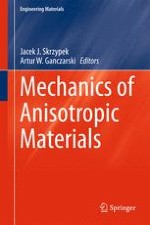2015 | OriginalPaper | Buchkapitel
4. General Concept of Limit Surfaces—Convexity and Normality Rules, Material Stability
verfasst von : Artur W. Ganczarski, Jacek J. Skrzypek
Erschienen in: Mechanics of Anisotropic Materials
Aktivieren Sie unsere intelligente Suche, um passende Fachinhalte oder Patente zu finden.
Wählen Sie Textabschnitte aus um mit Künstlicher Intelligenz passenden Patente zu finden. powered by
Markieren Sie Textabschnitte, um KI-gestützt weitere passende Inhalte zu finden. powered by
